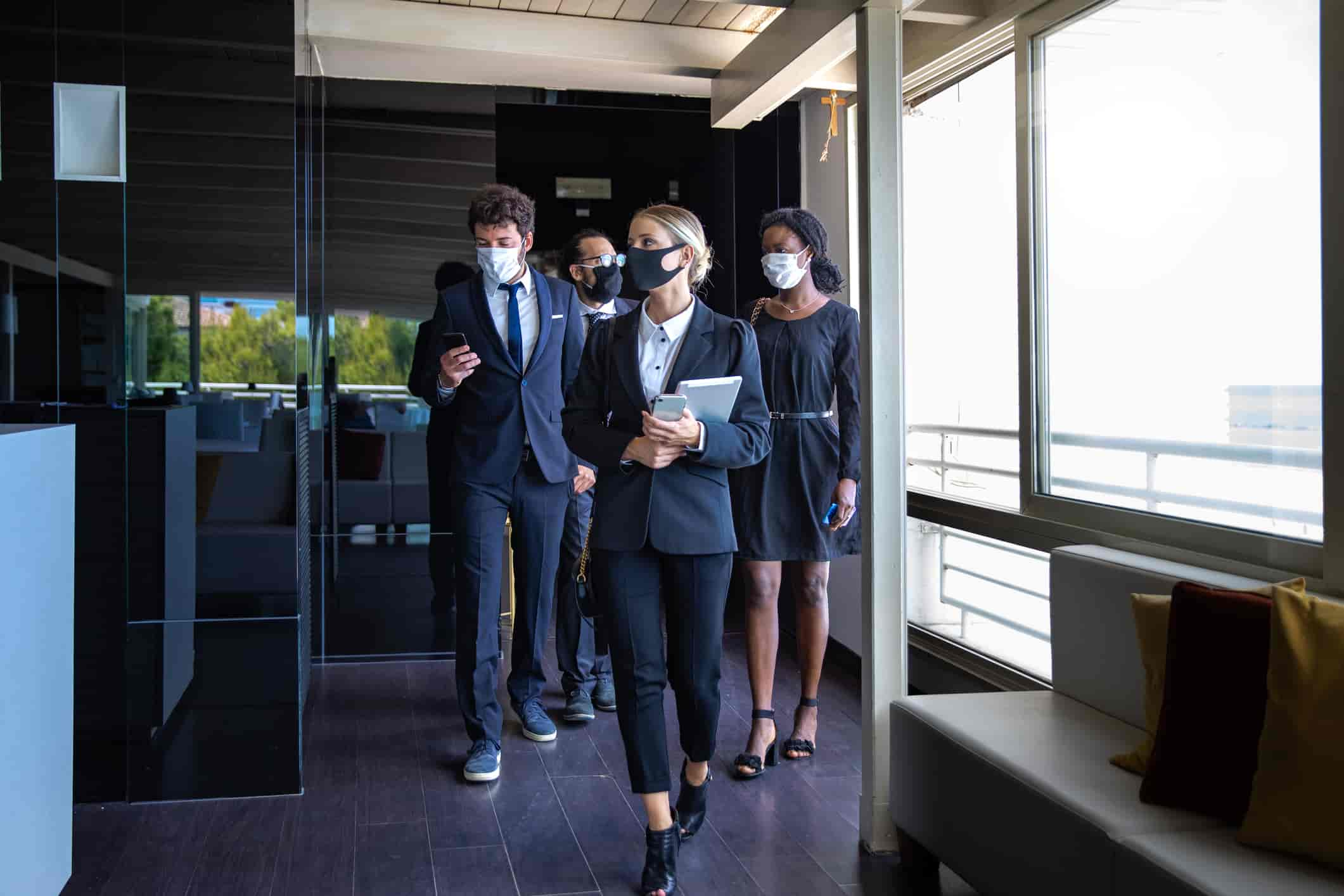
Written by
Drew Gieseke
Drew Gieseke is an aPHR®-certified marketing professional who writes about HR, compliance, and healthcare solutions.
Template: How to Communicate New COVID-19 Screening App Policies

COVID-19 symptom screener apps and platforms provide an extra layer of defense for HR to keep employees safe. When incorporated into a comprehensive coronavirus safety plan, these solutions can help keep teams safe in more ways than one. Find out how you can communicate a new screening solution with this easy-to-use template.
How Do Symptom Screeners Work?
COVID-19 screening apps range in scope and capabilities. Some ask simple, direct questions about temperature, travel, and potential exposure. Others gather detailed data that can be used to keep track of any potential outbreaks in your workplace. Some platforms can be downloaded onto a smartphone, some are online forms that employees fill out every day, and others still can be seamlessly incorporated into a company’s HRIS.
These assessments typically ask employees to self-report their symptoms, which means HR teams are relying on honesty versus conducting what would normally be considered a medical examination. Employees are often asked to record recent international travel, their potential exposure to people with COVID-19, their symptoms, their temperature, and sometimes more.
No matter the platform, the basic premise is that by collecting this information, HR can both:
- Reduce the risk of infection in their workplace and
- Flatten the curve in their community
Template: New COVID-19 Screener Solution and Protocols
If you’ve recently selected a COVID-19 screening app for your workplace, it’s key that HR clearly communicates the new protocols to employees. Use the following template when announcing a new symptom screening app, including how it works and when employees should use it:
Team,
I want to thank each of you for your patience during this uncertain time. As you already know, we’ve reopened the office with several key coronavirus prevention protocols in place. With this in mind, beginning [date], we’ll implement another security measure that will help keep our office safe from an outbreak.
[Company] has selected [app] to use as a symptom screener before employees enter the workplace each day. Here’s how it works:
- All employees will be required to download [app] and create a basic user profile with their work email address. Use the following link to access the platform: [link].
- Employees will self-report any symptoms they’re experiencing at least an hour before reporting to work.
- Employees who do not pass the exam (i.e. have a temperature greater than 100.4 F or a persistent cough) will be asked to work from home until their symptoms subside. They must continue self-screening during this remote-work period. For a full list of benchmarks that must be reached to report to work, use the following link: [link].
- All of your data is collected privately and only accessible by HR.
- Employees are expected to begin using [app] on [date].
[Company] expects all employees to comply with this new process. Refusal to do so may result in disciplinary action or termination from the company.
Once again, this is yet another measure we’ve implemented to ensure that operations continue running as smoothly as possible. If you have any questions about [app] or our safety plan in general, please contact [contact information].
Thank you as always for your cooperation and commitment to keeping our team safe.
[Name]
What Else Should HR Consider?
Instructions for screening app solutions and corresponding compliance measures should be easily available for everyone on your team. Post these details on your intranet, in the breakroom, or email it to your team. To be extra compliant, do all of the above.
Keep in mind that employers can require that someone stay home and work remotely if they’re exhibiting symptoms. Certain employees are also permitted extended sick leave under the Families First Coronavirus Response Act (FFCRA). Employers can even require that an employee test negative on a COVID-19 assessment before returning to work, or quarantine for up to 14 days before returning.
Also, as a best practice, screening apps ought to collect only the minimum amount of information needed to determine whether it’s safe for an employee to report to work for the day. All of these details should be considered when implementing the usage of the new screener and incorporating related protocols into the workplace’s coronavirus safety plan.

Written by
Drew Gieseke
Drew Gieseke is an aPHR®-certified marketing professional who writes about HR, compliance, and healthcare solutions.
Related Posts
We just wrapped up another phenomenal Weekdays with Bernie (WWB) Conference!
Employees are the heart and soul of an organization, and valuing their opinions can have...
HR parties of one already have an abundance of tasks to keep up with. From hiring to...
The talent search is no longer a skirmish or a battle. It’s a WAR! As a strategic HR...






Submit a Comment